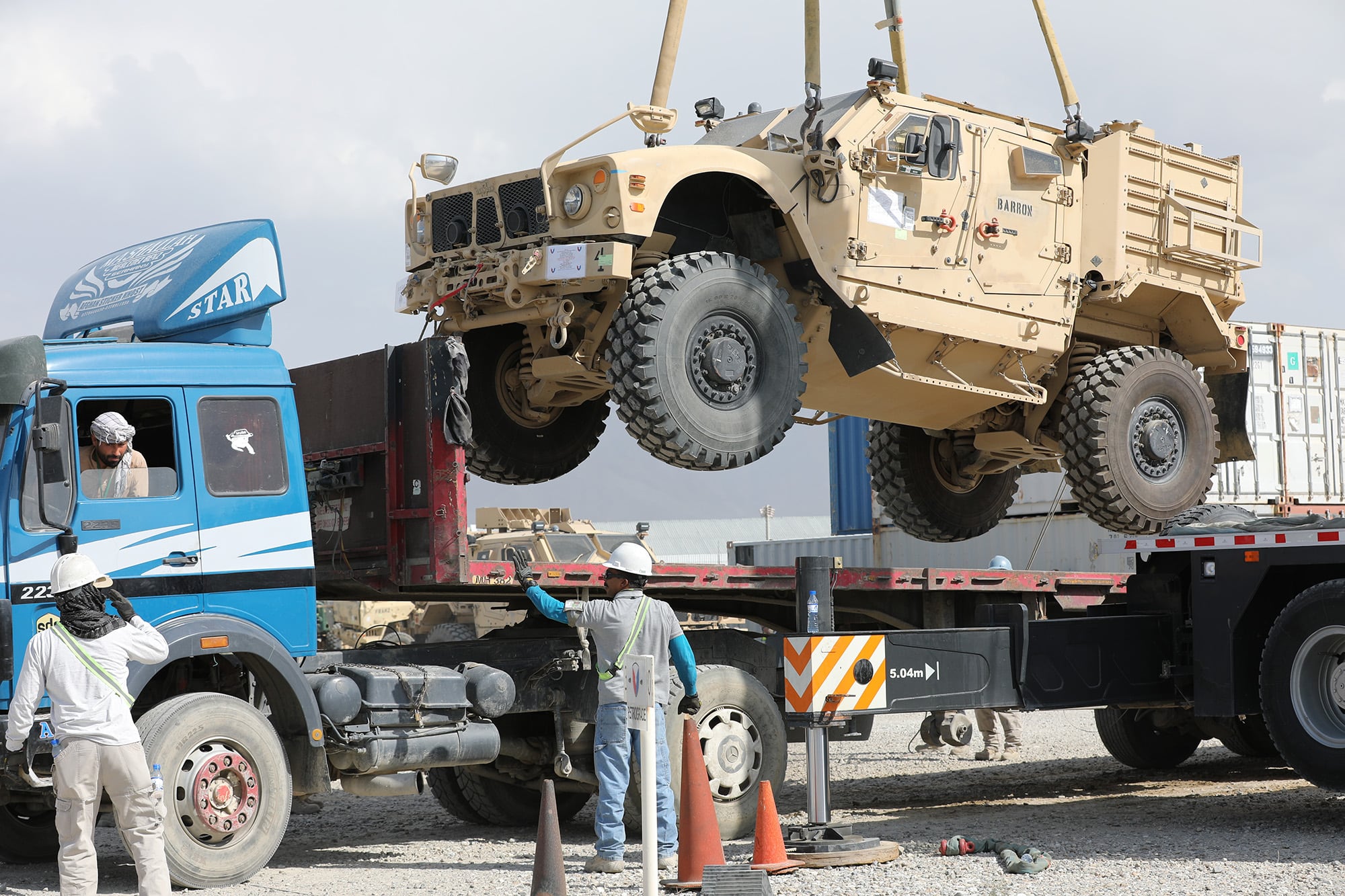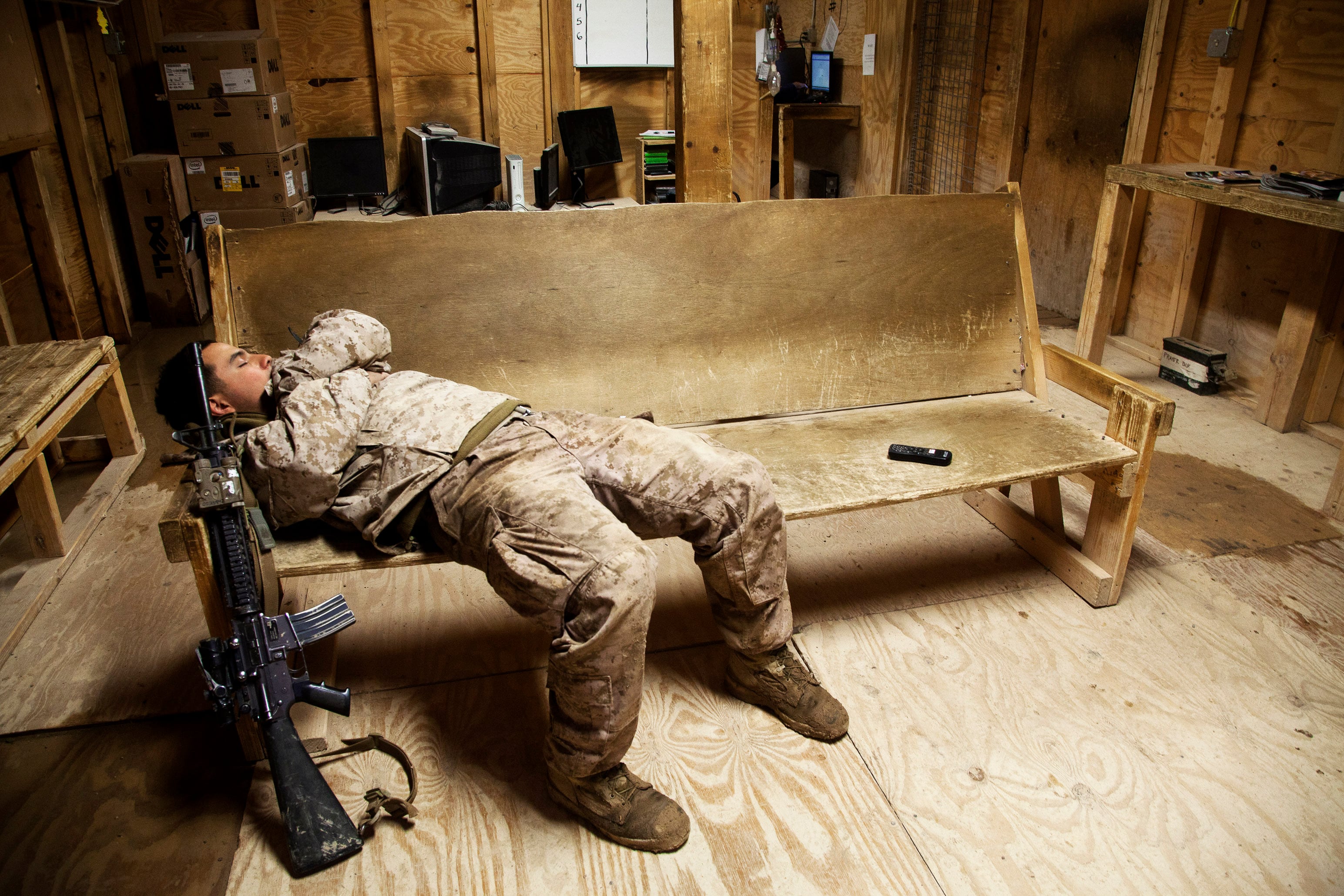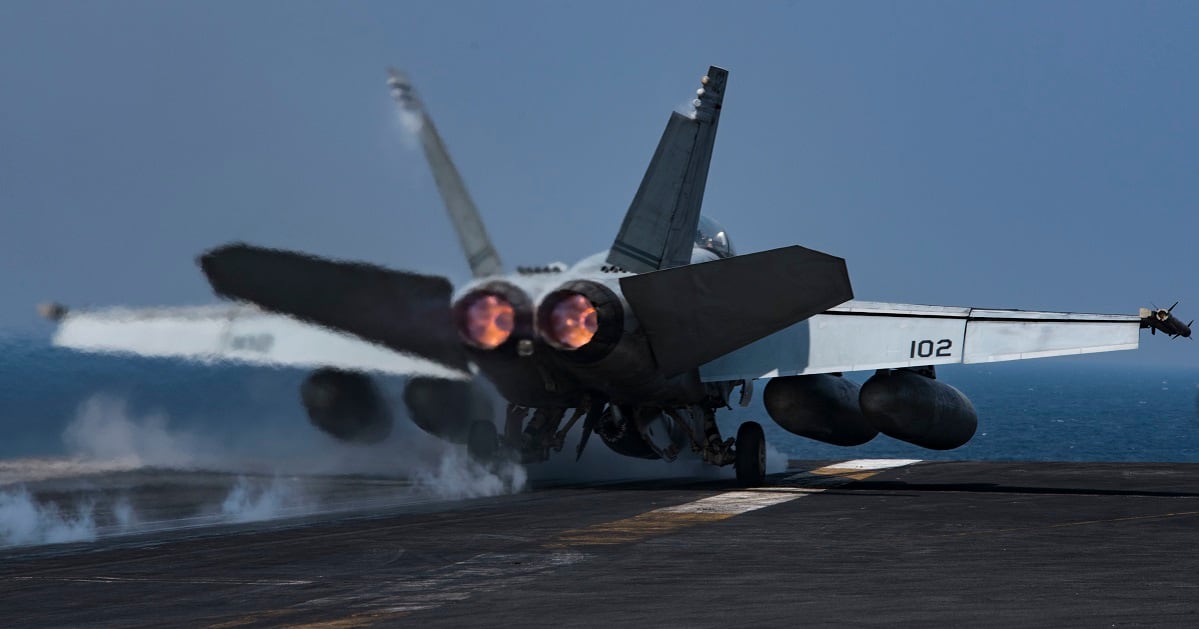The U.S. military is mulling how to position its aircraft throughout the Middle East and Asia to continue airstrikes and intelligence-gathering missions in Afghanistan, as American forces prepare to leave key installations like Bagram Air Base behind, the head of U.S. Central Command said this week.
Appearing before the House Armed Services Committee Tuesday, Marine Corps Gen. Frank McKenzie told lawmakers he is drawing up options for keeping counterterrorism forces on call in the region. Those alternatives are due to Defense Secretary Lloyd Austin by the end of April.
Manned or unmanned aircraft could play a large role in any remaining presence that could peer into and respond to threats inside Afghanistan, McKenzie said.
He made similar remarks before the Senate Armed Services Committee Thursday: “I didn’t say we wouldn’t go back in to strike. But we’re not planning to go back in to reoccupy.”
RELATED

To find and track insurgents, the U.S. needs to maintain “heavy intelligence support” in the area, he said. The farther an aircraft like a Reaper drone must travel, the harder that becomes.
“You will have to base your overhead [intelligence, surveillance and reconnaissance assets] from no longer within Afghanistan, where an MQ-9 can take off and be over its target in a matter of minutes,” McKenzie said.
The U.S. is dispatching its diplomats to feel out whether a neighboring country would be open to hosting American surveillance assets, he added: “We will look at all the countries in the region.”
Nearby countries like Tajikistan, Kyrgyzstan and Uzbekistan no longer have agreements with the United States that would allow military forces to be based in-country to conduct strikes or surveillance.
“Some of them may be very far away,” McKenzie said of potential hosts. “There would be a significant bill for those types of resources, because you’d have to cycle a lot of [ISR aircraft] in and out.”
Maintaining a strong surveillance network will be key to ensuring “individuals in caves” cannot organize to threaten the U.S. homeland, said Amanda Dory, acting undersecretary of defense for policy.
Once a target is identified, the military would need a way to strike from afar — more difficult than a bomb dropped or missile fired from inside the country, but still possible.
U.S. forces could use long-range precision weapons, manned raids or manned aircraft to take out a target, McKenzie said. Whichever the military chooses must minimize civilian deaths and other collateral damage.
“There are problems with all three of those options, but there’s also opportunities with all three of those options,” he said.
RELATED

An aircraft carrier will remain in the region so that fighter jets can respond to threats during the drawdown, which President Joe Biden has pledged to complete by Sept. 11.
B-52 bombers were also dispatched to protect departing forces.
RELATED

Republican Rep. Mike Waltz of Florida questioned whether it makes strategic sense to abandon Bagram Air Base in the northeast as the Pentagon increasingly focuses on nearby China, Russia and Iran. Air Force organizations like the 455th Air Expeditionary Wing use Bagram as a home base for A-10s, C-130s, HH-60s and other combat platforms.
“Bagram is key terrain tactically in Afghanistan, operationally, and strategically, it’s the definition of key terrain,” McKenzie answered.
“I don’t want to put on rose-colored glasses and say it’s going to be easy to do,” he added of striking the right counterterrorism balance in the region. “We’re examining this problem with all of our resources right now to find a way to do it in … the most intelligent, risk-free manner that we can.”
Rachel Cohen is the editor of Air Force Times. She joined the publication as its senior reporter in March 2021. Her work has appeared in the Washington Post, the Frederick News-Post (Md.), Air and Space Forces Magazine, Inside Defense, Inside Health Policy and elsewhere.




